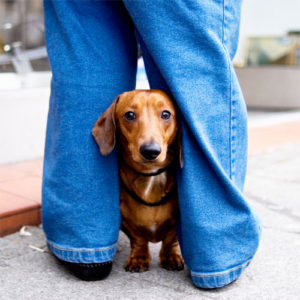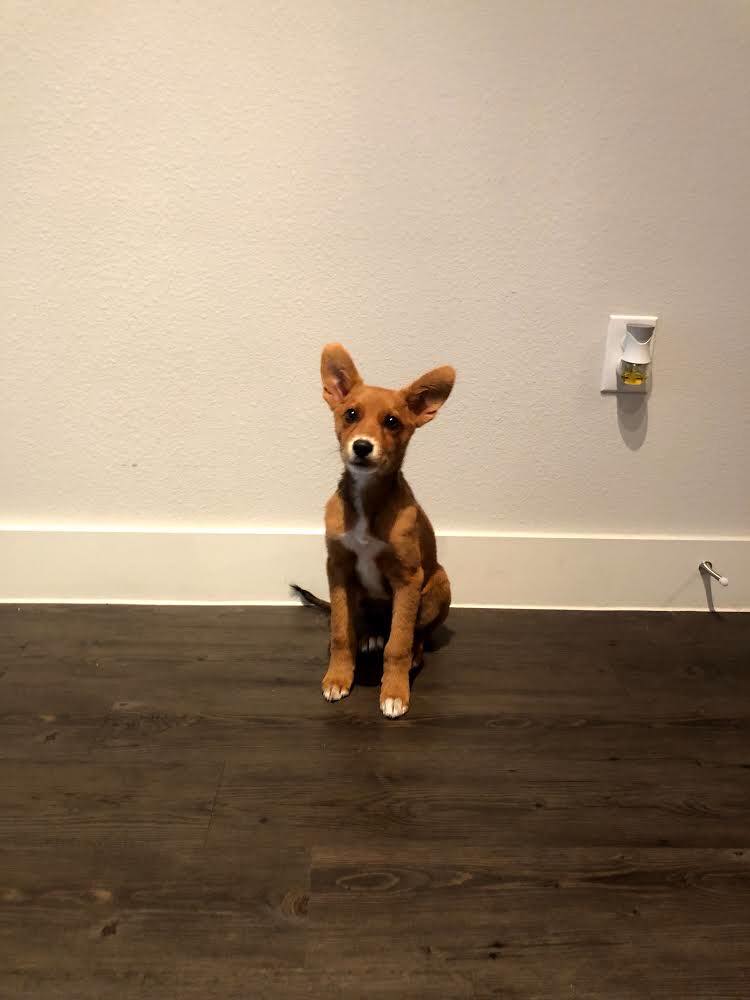 Fear is unfortunately all too common in dogs and can be traced back to one of two causes. The causes are either a genetic predisposition to fear or fear they have learned in their lives. Fear can be learned in a dogs life by human mistreatment (which includes physical, mental, and social mistreatment) or it can be learned by a traumatic event that has not been dealt with properly by the dog.
Fear is unfortunately all too common in dogs and can be traced back to one of two causes. The causes are either a genetic predisposition to fear or fear they have learned in their lives. Fear can be learned in a dogs life by human mistreatment (which includes physical, mental, and social mistreatment) or it can be learned by a traumatic event that has not been dealt with properly by the dog.
Physical mistreatment of a dog is when a human is too rough with a dog when they are angry and typically affects a puppy much more than an older dog. Mental mistreatment can take on many forms, but is typically when a person yells at a dog in an angry enough tone to cause a fear response (also a bigger deal with a puppy). Social mistreatment of a dog is when a human doesn’t allow their dog enough exposure to social situations (other dogs, people, cities) in their early life causing the dog to miss it’s critical socialization window. This window lasts up until roughly 16 weeks of age.
In my experience working with both rescue dogs and family raised pets, dogs that have missed their socialization window are the hardest to rehabilitate. A couple of examples that come to mind illustrating this are a shepherd mix and a shih-tzu. The shepherd mix came to me with a deep scar around her muzzle where a human had left a rubber band for a long period of time. It took her about a day to completely trust myself and the entire staff. The shih-tzu came from a puppy mill where he was never exposed to humans except when they would come in to feed or clean the cages. The dog had never learned how to be social due to a lack of any positive interaction. He had been in a foster home for six months before he came to me and it still took about three weeks before I started seeing him trust anybody. The shepherd mix had learned both fear and love of humans which meant he knew that both situations can happen. The shih-tzu knew nothing about love and affection and had completely missed his socialization window (he was roughly five years old) which made his rehabilitation much more difficult.
A traumatic event in a dogs life can also cause long term fear. The event can be as major as a dog attack or being hit by a car or it can be something that seems minor to us such as falling on a slippery floor. When a traumatic event is not dealt with properly a dog can start to develop fear and phobias that can be specific to the situation or generalized to the entire outside world. I have worked with dogs that have refused to go for walks with their owners and shook from fear anytime they left the home due to a dog attack years in the past that was never overcome mentally.
There are many different theories and training techniques that people use when trying to help a fearful dog, some work well, some don’t work at all, and some are just plain misunderstood. The type of training that will be addressed in this article is desensitization. One of the first things that I explain to clients is that fear cannot be overcome until the dogs brain is calm enough to learn. If the dog is pulling on leash and bouncing all over the place his brain is too stimulated to be exposed to a fearful situation. Many dogs are made worse by people with good intentions who try to practice desensitization without complete knowledge of how to do it. If a dog is scared of noises and you create a noise over and over again trying to desensitize him to it without helping calm him down there is a very high chance that the fear will only become worse. When practicing desensitization it is important to know an effective way to calm the dog both before and during the process.
I start the process by training the dog on the “heel” command until he is able to walk at my heel side and turn left and right as I do. I then practice “heeling” the dog past things that might excite him such as dogs, people, and even food. We work until the dog can effectively ignore anything that excites him while “heeling”. The next step is to slowly and safely create the situation that causes the fear at an appropriate level. If the dog has a fear of fireworks I will “heel” the dog while someone else lights off a firework quite a distance away. If I see fear in the dog I will continue working with him in the ‘’heel’’ position until he is completely calm. We continue this process until that level of stimuli no longer causes fear. The following day I will start the process again and bring the stimuli slightly closer and work until the fear is not longer present. This process works well because it teaches the dog to pay attention to your body language and it also gives him something calming to do when the fear causing situation presents itself. I have worked with dogs that have fears of pretty much every thing imaginable. I see fear of cars, trucks, fireworks, thunder, other dogs, humans, and bicycles to name a few. These issues are typically addressed in a similar manner.
When training your own dog please consult a professional before beginning any training program if you are encountering behavioral issues.
Matt Covey
Suburban K-9
Elgin, Il



